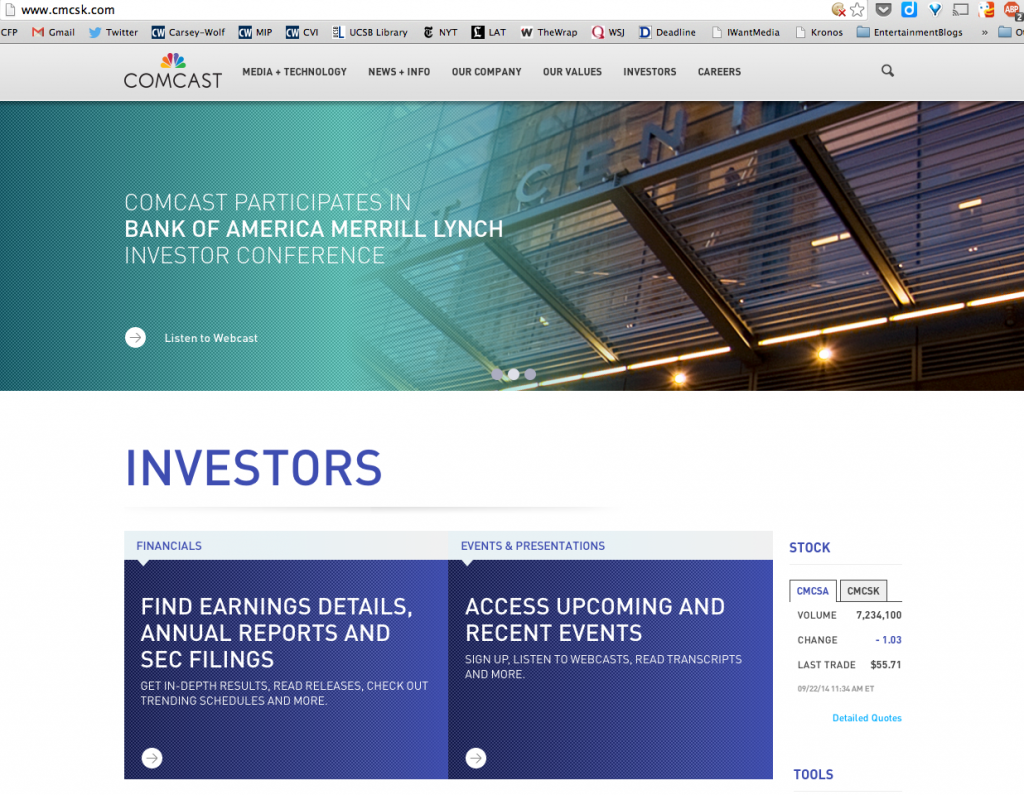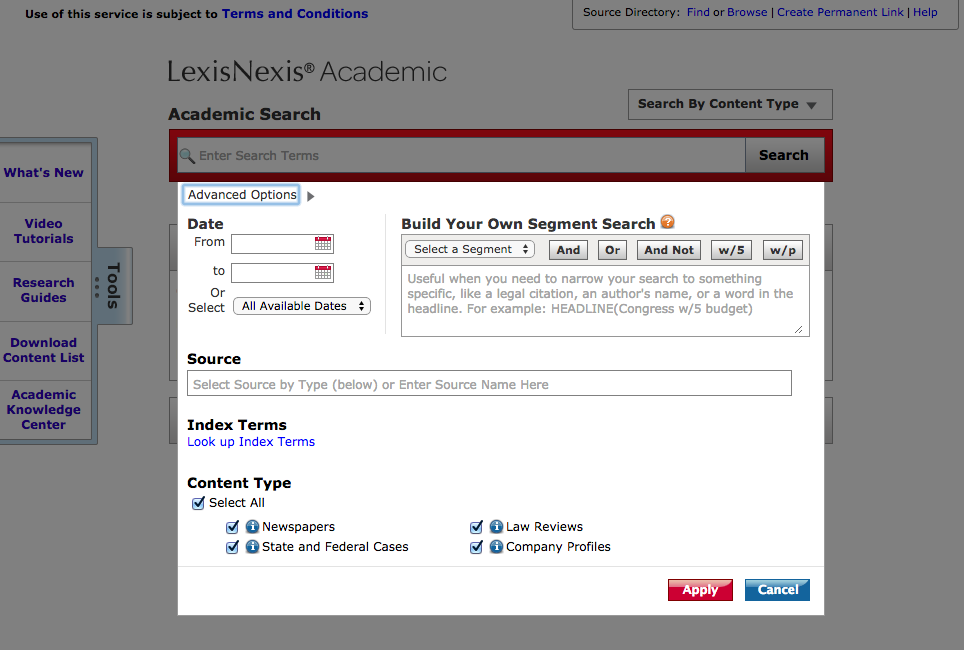 Cinema Journal Teaching Dossier
Vol. 2(3) Fall 2014
Karen Petruska
University of California – Santa Barbara
Cinema Journal Teaching Dossier
Vol. 2(3) Fall 2014
Karen Petruska
University of California – Santa BarbaraMedia industry studies shares with other approaches to media studies a focus upon how an individual text may be shaped by the culture in which it is created. In the same way that attitudes toward gender or race are reflected in the content produced within a particular culture, a media object is also necessarily molded by the economic parameters guiding its development and by the business practices and relationships that drive its circulation. That granted, students in my Media Industries courses, deeply immersed in the world of textual analysis, have struggled to shift from studying images and ideologies to querying business models, technological transformations, and questions of power. While they conceptually “get” the value of examining the business of media, they need to acquire new tools—and to develop new questions—to complete this sort of inquiry.
Theorizing the connections between economics and art are complex, intricate, and sometimes convoluted, so to bring the conversation down to earth, I ask students to complete a semester-long research project that entails a focus upon one media company. The project is composed of six mini-research assignments, a paper proposal, and a final research paper.[1] Students are tasked with using a new research database or journalistic resource for each mini-assignment to answer a driving research question.[2] To complete each assignment, students must find specific documents and respond to prompts provided by me, submitting a hard copy of their search results that generally consists of citations, article summaries, and analysis of how the collected documents help answer (or refine) research questions
This course does not construct a teleological reading of a conglomerate’s all-powerful control; instead, it encourages students to construct and interpret a matrix of pressures and objectives as a context from which media emerge. This assignment therefore starts at the macro level, instructing students to pick one conglomerate from a pre-determined list that will be their focal company for the term.[3] One of the greatest challenges of teaching media industries is asking students to connect the dots between conglomerate industry structures, their financial priorities, and particular media objects. In some ways, this is endemic to this kind of work, because the virtue of owning a conglomerate is the ability to report earnings in as positive a manner as possible, highlighting that which is most lucrative. It is never clear, for example, how the successes and failures at the summer box office or during fall sweeps impact the bottom line for Comcast, because they rarely break down divisional units with that sort of detail and may engage in creative accounting.
By starting with the conglomerate, though, students gain a sense of the big picture. They learn about the enormity of the business, and they have the opportunity to study the relative importance of that company’s divisions and subsidiaries, in particular the position of media production amidst other, often non-media related, ventures.
Students begin by studying the conglomerate’s corporate website.
In addition to locating specific documents or bits of text (like a company’s mission statement and most recent quarterly report), students are also asked to interpret the appearance of the site—to determine what may be that company’s desired public image. This sort of analysis is subjective, but it allows the students to bring their own interpretive power to data collection. More importantly, it inspires them to apply to companies the same narrative analysis skills they learn in other media courses. For example, the appearance of the website (text or image heavy? emphasizing film or other types of media?) and the ways the company reports its earnings can provide insight into how that company is structured, how they conceive of the interrelationship among divisions, and even what their priorities are in terms of future production. We also consider in some detail the press releases housed on corporate sites, as documents to read critically and as a means to quickly identify those areas that the company finds most laudable or promising. This assignment, in other words, is about image deconstruction.
The next assignment introduces the SWOT Report prepared by research firms such as MarketLine, pulled from the Business Source Complete database. “SWOT” stands for Strengths, Weaknesses, Opportunities, and Threats, and the data in this concise (3-7 page) report narrativizes the company’s prospects and its place within the larger media industries. The report is written simply (ideal for students), and it demonstrates how a business document operates as a cultural text, written for a specific audience (investment professionals) with a specific set of questions (what is a valuable investment). When reviewing a few of the SWOT reports in class, we consider the implications of a company being beholden to its board of directors and its investors, particularly in terms of what types of media are most likely to be produced, to be distributed, and to be financially successful. For the purposes of the student’s own project, the SWOT report frequently introduces crucial questions about the company’s future, and therefore may inspire possible paper topics, even at this early point in the semester. The subsequent stages of the assignment involve a query of industry trade publications (through the sites themselves or databases like the Entertainment Industry Magazine Archive), then the massive Lexis-Nexis database, and then industry-focused blogs/sites (like Deadline or GigaOM).[4]
These databases may look simple (with only a search box featured on the screen), but they can be incredibly time consuming because the results are unpredictable. In the most ideal class situation, a librarian will play a crucial role throughout the semester. I was lucky to work with a superb media librarian at Georgia State University, Nedda Ahmed, when I first developed this course.[5] She attended class regularly to provide tutorials (and handouts with instructional reminders) about using the various databases students were required to employ.
The students must find five articles through each type of database that address their research questions, and they submit to me a citation and summary of the article’s content, knowing that I am especially interested to understand how each article advances their research. By breaking down the research into short bursts like this, I hope to make the students comfortable with different search tools and to think critically about how various databases might offer differently valuable documents. They also learn, by necessity, which databases are easiest to use and what types of keywords produce the most relevant results. In fact, one prompt within the assignment asks students to list the keywords they employed to keep students conscious that trial and error is a crucial element of this work.
After compiling this packet of documents, students begin working in earnest on their paper, first writing a proposal and meeting with me to review their progress and plans to complete the research and writing process. This meeting is a culmination of many weeks of receiving individual feedback from me about their topics. With this sustained engagement with the tools and skills essential for this type of learning, I have at least seven opportunities to intervene, to assist, and to support students in their grasp of the course fundamentals and the specifics of their individual work. Because the students have lived with their topics for months, instead of mere weeks, they can develop deeper research questions and more nuanced arguments, and they can course correct when needed. Moreover, it helps them avoid the typical pitfalls of the final paper: inaccurate citations, accidental (or intentional) plagiarism for essays researched in haste, and a lack of well developed core questions.
There are decided benefits of the assignment for the instructor. Because each student spends the semester studying different types of media, they bring to class discussions a unique frame of reference and a specific set of relatable data. I’ve learned an incredible amount about gaming, public relations, and sports media, for example, from students pursuing those topics for their papers. Additionally, media industries features wide applicability for students outside traditional film studies (business, journalism, and advertising students, aspiring authors, etc.), even while it also challenges future filmmakers to ponder the practical realities of working in this field today.
Broadly, the course is at once an attempt to understand something about how capitalism operates, as well as its limitations, including the potential conflicts between public and private interests. While media industry studies provides insights into such fundamental media operations as ratings, marketing, and distribution practices, it also rejects that these structures are inevitable or politically neutral. Industry structures reflect longstanding and naturalized business relationships, so it is necessary to remind students of a variety of possible conflicts of interests. For instance, government regulators often oversee businesses within which they have worked, journalistic critics depend upon access to the industry about which they write, and film studios share a stake in the continuation of the movie theaters that exhibit their films. These relationships are complex and these industries share mutual dependencies that testify to the politics that may inspire historical media companies to hesitate about working with new entrants or adopting new technologies. For all students, then, I hope the class prepares them to better understand not only the role of giant corporations in producing our news, reporting our politics, and delivering our entertainment, but also the stakes for the daily decisions make by individuals working within those giant systems.
[1] Nedda also reviewed the assignment in early stages and suggested the inclusion of the SWOT report, which is now a mainstay of the project.
[2] In some ways the distinction between trade publications that originated in print (like Variety and Broadcasting) and industry-focused blogs like Deadline is a slippery one—Nikki Finke, for example, began Deadline at LA Weekly. But the distinction intends to highlight not only a sense of journalistic divisions (i.e. web sources are undermining the business model of the traditional print press) but also of history, with Variety developing a particular kind of reporting style, for example, that influences its output and legacy.
[3] In building the list of conglomerates from which students must pick, I only include public companies exchanged on the stock market. While this may necessarily preclude significant new companies, the reporting requirements imposed upon public companies by the Securities and Exchange Commission delivers an impressive (and essential) treasure trove of documents and resources.
[4] When teaching a shortened semester, during summer for example, I have replaced the final paper with an open-book final exam with essay questions best answered by incorporating examples from the research assignments.
[5] For example, if a student wants to learn more about cord cutting, s/he may select to research Comcast Corporation; similarly, if a student loves comics, s/he may pursue a project about Disney’s purchase of Marvel.


